Building on what the discussion over at the Chronicle boards about the article on 2139 39th Ave, there arises the interesting question of how to do a demolition. There are people who feel if you tear something out, that is somehow not green. Sorry, but that is a load of crap. Anyone who has ever built knows that things get old, wear out, rot. After enough time even the pyramids in Egypt are going to fall down. The real question is how do you manage the remodle process so you preserve what you can, recycle what is viable, and when you rebuild, you think about what will happen to the material you are now putting back into the structure. One tool you can use is Ohmega Salvage over in Berkeley. I quote from their own site:
“At Ohmega Salvage we are committed to preserving the architectural heritage of the Bay Area. To this end, we buy and sell usual and unusual building materials.
Our company has made its mark in the Bay Area over the last 35 years as the leading supplier of restoration materials to architects, contractors, and homeowners.
Our goal is to save architectural materials that are still useful to others and essential to authentic restoration projects; as well as to save resources in a world burdened with too much landfill.”
If your debris is more junk, be careful when you throw it out. For example, hazardous waste needs to be disposed of properly. If there is asbestos, have it abated by people who know what the hell they are doing, and won’t dump the bags on a street corner someplace. If there are old chemicals, paints, solvents, batteries – don’t through them into the dumpster and cover them up with other stuff, bring it all over to third street for proper disposal. You are in charge of you’re own demolition, so do it right.
And when you rebuild or remodle, remember, what you put in will eventually come out. So every choice you make now will impact the environment in the future.
Well, much thanks to the Chronicle for a very kind story yesterday in the Sunday paper. As I am a dirty landlord already, it is nice to also be an evil greedy developer =) Yes, I am referring to the lively discussion over at the Chron boards on the story, though I have to say it was pretty cool. A lot of people had some valid points, and even the trolls were funny. One criticism that came up that warrants more discussion was about demolition. Many people were upset at the thought of tearing out material and sending it off to a landfill. While it is true, construction debri is a serious, serious problem, as something like 22% of the total waste stream in the state comes from construction debri, sometimes you have no choice but to tear things out. For 2139 39th ave, the house had some serious termite damamge. There were parts of the first floor hardwood flooring that had so much termite damage, you literally stepped through the floor when you walked on it. There is nothing to salvage there. When a bathroom gets water behind the tiles and under the shower pan, sorry, but those walls are coming down. So my point is, sometimes demolition is unavoidable, and do not let the trolls get you down if you have to tear something out. It is a little like surgery, sometimes you have to remove a diseased part of your body to save you. Here are some before shots to consider:
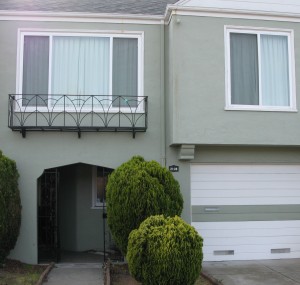
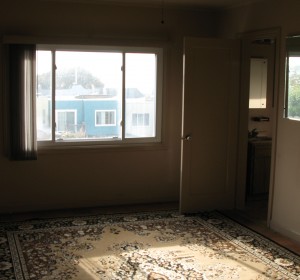
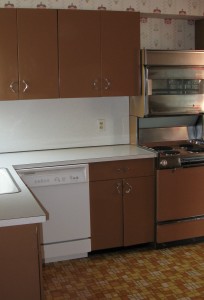
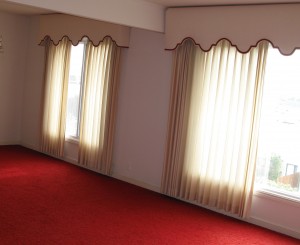 Honestly, 30 year old red shag carpet? How are you going to salvage that?
Honestly, 30 year old red shag carpet? How are you going to salvage that?
This Saturday at 8:30 PM is Earth Hour – one of those global call to action things….interesting note on this is that it traces its history to San Francisco (all good things begin in San Francisco) when “Lights out SF” in 2007 pushed people to turn out their lights in solidarity with the energy conservation movement. You know what, its a freakin good idea. How hard is it to turn out your lights for an hour? Not too hard, and it sends a message that people give a flying fart about the world. Want to go one step further? Check your outdoor light after you turn it off, if it’s an incandescent, and I will bet two pig tails and a sack of corn that it is, change it to a CFL (Compact Flourescent Light). Then when you turn it back on, you have accomplished something long lasting, something Sustainable, out of the whole thing.
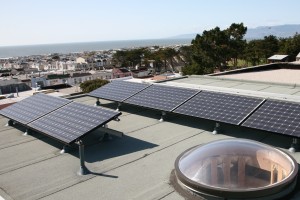 That’s the view from the roof of 2139 39th Ave, my Sustainable Project out in the Sunset District. And lest some of you start making cracks about how the Sunset is Foggy – there have been more than enough sunny days this last year to justify the installation of the 2.3 Kilowatt solar photovoltaic system you see here: we are generating over 1,100 watts right now at 9:27 AM, and by the afternoon we will be cranking out well over 2,000 watts.
That’s the view from the roof of 2139 39th Ave, my Sustainable Project out in the Sunset District. And lest some of you start making cracks about how the Sunset is Foggy – there have been more than enough sunny days this last year to justify the installation of the 2.3 Kilowatt solar photovoltaic system you see here: we are generating over 1,100 watts right now at 9:27 AM, and by the afternoon we will be cranking out well over 2,000 watts.
One thing most folks do not understand about a solar system is how the light is transformed into electrical energy. Well, the photons (light) hits those panels above (they are black to absorb more light) and they create a direct current. Your house uses alternating current electricity to power your ipod and microwave, so that direct current (DC) has to be inverted into an alternating current (AC) using one of these things…

That’s an inverter in the garage that changes the DC into AC….like the band. Except they are AC/DC because, well, oh never mind.
I received a $4,000 rebate check from PG&E for the panels, and if I ever get off my lazy ass and finish the paperwork I have another $3,000 due from the city and county of SF. That plus the cost of the installation does not get added to your property tax basis around here, which is cool. Plus the savings off energy – I still pay the taxes and such, but the electrical line on the bill is zero. And I produce no carbon.
Win, win, win and win.
H



 Honestly, 30 year old red shag carpet? How are you going to salvage that?
Honestly, 30 year old red shag carpet? How are you going to salvage that? That’s the view from the roof of 2139 39th Ave, my Sustainable Project out in the Sunset District. And lest some of you start making cracks about how the Sunset is Foggy – there have been more than enough sunny days this last year to justify the installation of the 2.3 Kilowatt solar photovoltaic system you see here: we are generating over 1,100 watts right now at 9:27 AM, and by the afternoon we will be cranking out well over 2,000 watts.
That’s the view from the roof of 2139 39th Ave, my Sustainable Project out in the Sunset District. And lest some of you start making cracks about how the Sunset is Foggy – there have been more than enough sunny days this last year to justify the installation of the 2.3 Kilowatt solar photovoltaic system you see here: we are generating over 1,100 watts right now at 9:27 AM, and by the afternoon we will be cranking out well over 2,000 watts.